25 best pop songs to test your speakers
"Pop music will never be low brow" – Lady Gaga

Pop music: a problematic genre to pin down. So, for the avoidance of doubt (and in an effort to better understand what constitutes an actual pop song) let us take a hint from a select few commercially successful musicians, singers and song-writers.
Frank Zappa once said, "I think pop music has done more for oral intercourse than anything else that has ever happened, and vice versa" – deep, coming from the Mothers of Invention.
John Lennon mused, "I love pop music. It's not easy to write a good pop song", and Manfred Mann stated, "Pop music is probably the only art form that is totally dependent on its success for the general public. The more people buy a record, the more successful it is – both commercially and artistically."
Pop, then, is music that actually becomes part of the vernacular; lovable and often hard to pen songs that have achieved considerable commercial success.
Historically, jazz, the blues, R'n'B, gospel and folk are among pop's roots, while electronica, dance, rock, metal and hip-hop are just some of its branches.
Of course, it is worth remembering that to be good encourages popularity, but to be popular is not always to be good. An understanding of contemporaneous societal pressures (and momentary pain relief from these) is surely a positive aspect of pop music, though. We certainly agree with Johnny Rotten when he said, "Pop music I have always loved best."
But what of the nagging notion that pop music is lesser, diluted, lacking in substance and ultimately, manufactured?
Get the What Hi-Fi? Newsletter
The latest hi-fi, home cinema and tech news, reviews, buying advice and deals, direct to your inbox.
Peter Tork has argued, "Pop music is aspirin and the blues are vitamins." Prince once uttered, "What's missing from pop music is danger" and Bono's thoughts on the matter include: "Pop music often tells you everything is OK, where rock music tells you it's not OK, but you can change it."
Perhaps our favourite such quote comes from Nina Persson, lead singer of The Cardigans, who said, "Pop music is a difficult term to define. I think about good music and bad music. Good music is good music whatever genre is comes from."
And now that the classification debate is all sorted (is it ever sorted?), which songs from pop's extensive and varied oeuvre should you be playing to test your stereo speakers? Thought you'd never ask. We've picked out 25 of the best we can think of and explained why they're a match for even the most gifted drivers. Our selection spans a whopping 50 years of the genre, too, so there's no danger of 1980s synth-and-jangle overkill.
Read on, suggest those we might have overlooked, and of course, click on your chosen streaming service to access our specially-curated playlist below. If you're after a wider selection of tracks, also check out our best songs to test your speakers guide.
- Our guide to the best test tracks to trial your hi-fi system
Billie Eilish – Bad Guy (2019)

If Jack White of the White Stripes and Lorde were to collaborate, their first single might sound something like Billie Eilish's Bad Guy. The first three-quarters of the track clips along at 135 beats per minute (BPM) and then, in the last quarter, there's a glorious deconstructed meltdown to just 60 BPM. Call it what you will – electropop, dance-pop, "pop-trap" or "nu-goth pop" have all been suggested as its genres – Bad Guy's minimalist production (synth bass, kick drum, amplified finger snaps, synthesiser riff, Eilish's ever-multiplying backing vocals and a Sydney pedestrian traffic light sound allegedly taken from a phone recording made by Eilish in February 2017) will separate the good from the bad when testing your system's clarity and separation through the lower midrange.
Amy Winehouse – Rehab (2006)
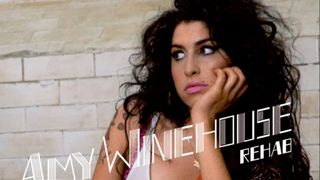
Mark Ronson's 1950s doo-wop treatment perfectly christens Winehouse's soulful vocal stylings and now especially moving lyrics in what will always be Amy Winehouse's incomparable calling card.
You probably know the story: Ronson and Winehouse were walking down a New York street having worked together for about a week. Talking about her dad, Winehouse said, "He tried to make me go to rehab and I was like, 'Pfft, no no no.'"
Ronson's response? "We've got to go back to the studio."
We were lucky to have her for as long as we did.
Travel onward well, mighty Amy Winehouse.
The Weeknd – Blinding Lights (2019)

In a 2020 interview for Variety magazine, Canadian singer-songwriter Abel Makkonen Tesfaye, known professionally as The Weeknd, said of his experience working with Swedish producer Max Martin: "Max and I have become literally the best of friends, but I don't do that with many people. It's not that I can't, but a collaboration is a relationship, it's like a marriage, you've gotta build up to it."
Well, if you're going to befriend a producer, the guy who made Britney Spears' ...Baby One More Time, the Backstreet Boys' I Want It That Way and NSYNC's It's Gonna Be Me (and that's just in the three years from 1998 to 2000) is an inspired choice.
The Weeknd's vocal range here goes from the juicy low register of F3 scaling all the way up to a high note of C5 and the synth-heavy production is yet another Max Martin triumph, but one that feels lifted from the 80s rather than the 90s. Is that initial drum riff straight out of Michael Jackson's Thriller? See what your speakers think.
Kelis – Milkshake (2003)
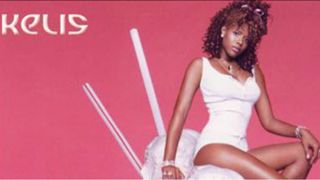
Close your eyes and try to imagine Britney Spears' sultry vocal at the centre of this Neptunes masterpiece, surrounded by its heavily distorted and intentionally bloated bass riff – because Pharrell Williams and Chad Hugo originally offered it to Spears for her fourth studio album, In The Zone. Only when Spears rejected it (luckily, she had Toxic, below, in the bag for that) did it end up in the capable hands of the New York pop and hip-hop revelation, Kelis. If anyone is going to tell us to "warm it up" (which is something we would otherwise never recommend doing with a milkshake) we want it to be her.
About a year after recording the track at Hovercraft Studios in Virginia Beach, Kelis said she "knew right away that it was a really good song", which is up there with one of the biggest understatements of 2004, behind Mark Zuckerberg's little Harvard experiment, The Facebook, which he and co-founder Dustin Moskovitz “were hoping maybe 400 or 500 people” might join...
The Backstreet Boys – Everybody (Backstreet’s Back) (1997)
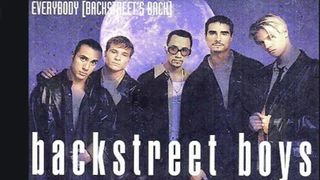
This haunted-house belter was released as the first single from the Boys' second international studio album, Backstreet's Back, in June 1997. Should we have put NSYNC's It's Gonna Be Me in this list instead? We think not – and not just because JT's voicing of "me" sounds like he's singing "May" in that particular tune.
Come at us if you want, but we love the parody of Thriller in the video. More than that, of course, we echo Larry Flick, who summarised for Billboard that the track features a "contagious dance/pop beat and catchy hook that perfectly showcases this talented group's voices". And it'll showcase your system's handling of dynamics and agility a treat, too. Team BSB forever.
ABBA – Money, Money, Money (1976)
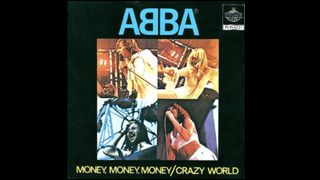
Furiously-paced, percussive key progressions and modulations aside, the lesser-heard lower belt of Ann-Frid 'Frida' Lyngstad will test your speakers' midrange chops in ways few pop songs can.
The iconic ABBA 1976 song was inspired by the musical Cabaret and is all juicy, darker bass-registers, an unrelenting disco beat and uncharacteristically hammered, insistent keys through the treble. It's a glorious, thumping triumph given the right system. Still saving up for one of those? We get it. In my dreams, I have a plan, if I got me a wealthy man...
The Rolling Stones – Gimme Shelter (1969)
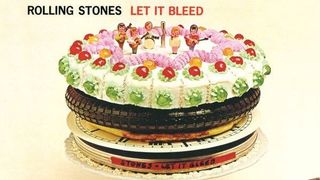
Though on some releases her name is misspelled as "Mary", Merry Clayton's duet with Jagger on this track is something else – and she's the reason this song was included over several other Stones songs we'd shortlisted.
According to Jagger, the collaboration was somewhat haphazard: they called Clayton to record "randomly" in the middle of the night. She showed up to the studio "in curlers" and contributed her parts in a few takes (typified by the lines "Rape, murder! It's just a shot away, it's just a shot away!") all of which Jagger said was "pretty amazing".
At around three minutes into the track, Clayton sings the chorus alone. On the final, intense vocal trill, her voice breaks. Should your speakers oblige – and as long as you're not listening to the remastered version – you'll just about hear Jagger's surprised response. It's halfway between an "Ooh" and a "Hmm", but it's there.
Clayton performed her otherworldly belted licks while pregnant. Sadly, soon afterward she suffered a miscarriage which some have blamed on the physical strain of this recording session.
In 1970, Clayton recorded her own version of Gimme Shelter, which became the title track of her debut solo album, released that year – also emphatically worth a listen.
Prince – When Doves Cry (1984)
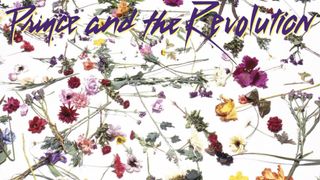
From the opening guitar solo, the Linn LM-1 drum machine and the looped, guttural vocal (which should start through the left channel and skulk slowly over to the right), this song is a test of the clarity and stereo imaging capabilities of your speakers.
Prince wrote and composed this song after all the other tracks were complete on Purple Rain, and he saved the best 'til last. In addition to providing vocals, he also played every instrument on the track – but there's a catch. Keyboardist Matt Fink revealed in 2014 that the baroque synthesiser solo at the end of the song was recorded by Prince at half speed, then sped-up to create the final version. Fink, of course, was tasked with learning to perform the solo live at the album speed. (And well done to him.)
The song is remarkably stark for a 1980s pop song, in that there's no bass line, so don't accept speakers that muddy things and make you think otherwise. Prince said that he'd originally had a bass line but decided that the song was too conventional with it – so he simply took it out. Genius.
Sia – Chandelier (2014)
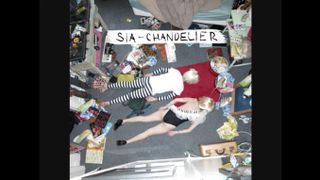
Regular readers might remember that the video for Sia's solo version of Elastic Heart featured in our best music videos of all time roundup. Both that song and this are the undeniable stand-out tracks from the vocalist's sixth studio album, 1000 Forms of Fear.
The song starts with a pared back reggae intro (albeit one sung in a mezzo soprano belt) and segues into a multi-layered, heavily produced electropop opus around the melancholic theme of self-destruction through partying and inebriation.
Think of your speakers as two pastry chefs; chefs who will need maître pâtissier levels of skill to fully recreate the viennoiserie that is this song. Love it, love it, love it.
Britney Spears – Toxic (2003)
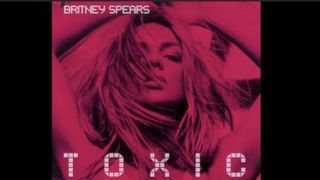
That's right, Britney Spears. Fun fact: Toxic was initially offered to Kylie Minogue for her ninth studio album Body Language, but she rejected it. Yes, we also think she's still kicking herself.
By far the best single from Britney Spears's fourth studio album, In The Zone, Toxic is produced by Christian Karlsson and Pontus Winnberg (known collectively as Bloodshy & Avant). Toxic's dance-pop beat, drums, synths, surf guitar and elements of bhangra, all topped off with Spears' breathy vocal, are a litmus test for whether your speakers' tweeter integration and treble frequencies are up to snuff.
One more fun fact: the high-pitched bhangra strings in Toxic are sampled from the 1981 Hindi classic, Tere Mere Beech Mein by Lata Mangeshkar and S. P. Balasubrahmanyam. Have a listen, you'll soon hear it.
Michael Jackson – Billie Jean (1983)
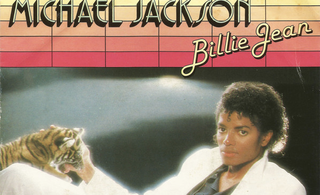
Hands up if you never knew that Jackson was actually posing with a baby tiger in this shot? The cropped version of said snap is the cover for the best-selling album of all time, Thriller.
For the song itself, the initial bass line here (after the two bars of drums) is key. Producer Quincy Jones apparently disliked the heavy bass and 29-second intro, saying it made the song too weak to be on Thriller – a reminder that producers can always be wrong. Can your speakers hold this iconic line down without coming off bloated?
Remember, according to legend this song is so good that when the lyrics popped into Jackson's head while driving, he was so absorbed that he failed to notice his car had caught fire, until a friendly motorcyclist informed him.
Beyoncé – Single Ladies (Put a Ring on It) (2008)
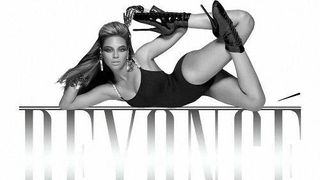
Beyoncé's stunning vocals made putting a ring on it a household phrase, but Terius 'The-Dream' Nash and Christopher 'Tricky' Stewart's production here is in fact oddball in the extreme – and, of course, brilliantly effective.
Aside from the heavy dancehall and bounce influences, plus the fact that the timing chops and changes from 3/4 to 4/4, you've got constant hand claps, morse code beeps, an ascending whistle, a punchy bass drum, synths that zoom out and in, and even noises you'd associate with a playground.
It's a tall order, but if your speakers can give each musical strand its due diligence, the track sounds remarkably playful. If they can't, you might get something approaching a dense cacophony. Underestimate the production chops on show here at your peril.
Journey – Don't Stop Believin' (1981)
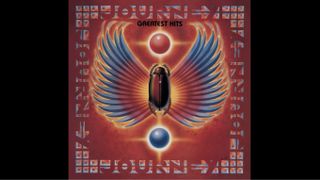
There are myriad reasons for including this song, so here are three. While most pop songs have a refrain that's repeated several times throughout the track in a traditional, verse-chorus-verse structure, the true chorus for Don't Stop Believin' – and the first mention of its title – is not heard until the last 50 seconds of the track. Steve Perry's vocal (and unfaltering "in the night" C-sharp belt) is therefore largely alone singing verses. Through the right speakers, you'll get its true texture – close to breaking but jubilant.
Then, there's the guitar solo taken by Neil Schon (a member of Santana before he formed Journey) at 00:54, which leaves us in no doubt as to who Journey's frontman really is.
And lastly, there's the knowledge that despite its well-known and beloved lyrics, there is no place called "South Detroit". Steve Perry said of penning the verses, "I tried north Detroit, I tried east and west and it didn't sing, but south Detroit sounded so beautiful. I loved the way it sounded, only to find out later it's actually Canada."
Whitney Houston – I Wanna Dance With Somebody (Who Loves Me) (1987)
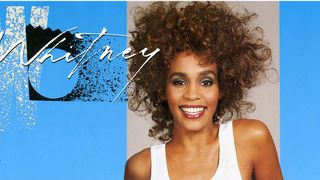
A chart-topper in no fewer than 13 countries, this track was written by George Merrill and Shannon Rubicam, aka pop duo Boy Meets Girl (best known in their own right for their hit Waiting For A Star To Fall). The pair had previously written the number-one Whitney Houston single, How Will I Know.
While the arrangement got a mixed reception (critics said it was a little too similar to How Will I Know and another banger of a pop song, Cyndi Lauper's Girls Just Want to Have Fun) Houston is at the top of her game here – and she's only 23.
Listen through talented speakers and you'll be nodding in agreement with Mariah Carey, who said of her contemporary, "She will never be forgotten as one of the greatest voices to ever grace the earth."
Lady Gaga – Bad Romance (2009)
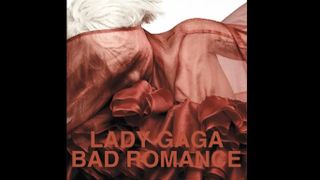
The fact that it's sold 12 million copies and topped the charts in more than 20 countries means you probably don't need us to tell you about this song. But see if your system can truly celebrate a pop offering which even Gaga touted as "experimental" – and let's not forget that this is the woman who once said, "I wasn’t put here to make pop music better. I was put here to ruin it, burst its bubble, turn it inside out, explode it and vomit it all over the world."
There's a spoken bridge, a throaty chorus (make no mistake, Gaga's vocal chords are like bells; she chose to strain over the notes) the German house-meets-techno beat, and the part that's sung in French. Sublime.
Phil Collins – In the Air Tonight (1980)
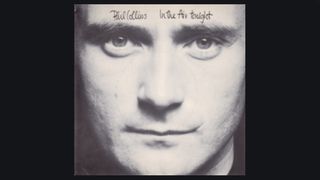
This was Collins' debut solo single, but he'd already achieved notable greatness: you don't get to be the drummer in Genesis for ten years and lead singer for five (after the departure of Peter Gabriel, see below) without a bit of talent and resolve.
The single displays much of Genesis' alternative approach. Your speakers will have to traverse its stark, sombre but simmering intro, a Roland CompuRhythm CR-78 1978 drum machine (which Collins apparently obtained specifically to deal with personal issues relating to his divorce from his first wife) a Prophet-5 analogue synthesiser and vocoded vocals. And that's before we even get to that drum fill, Collins' calling card – albeit one arguably now more famous for having been performed by a gorilla, in a Cadbury's Dairy Milk advert.
Kate Bush – Wuthering Heights (1978)
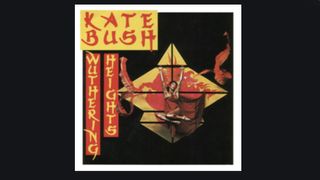
Did you know that Bush shares a birthday with Emily Brontë, author of the novel which inspired Bush's debut single? Bush wrote the song aged just 18, after watching a BBC adaptation of Wuthering Heights.
Twinkling keys, chimes, and Bush's ethereal soprano stylings aside, what's remarkable here is that Bush recorded her vocal in a single take – and even through the most agile and revealing of systems, it is flawless. Apparently, engineer Jon Kelly later regretted not placing the electric guitar solo louder in the mix. Have a listen; see if you agree.
Pharrell Williams – Frontin' (2003)
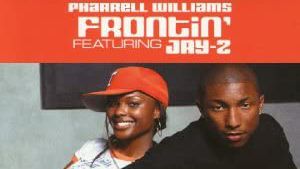
It wouldn't be a best pop song round-up without just one more offering from exemplary production duo Chad Hugo and Pharrell Williams, aka The Neptunes, this time at the mic as well as at the mixing desk. When Williams released Frontin', his debut solo single, Williams went to great lengths to stress that it was a one-off – he was a producer (see Milkshake, above), not an artist or a frontman. Then, with the release of the excellent album In My Mind, in 2006, all of that changed.
There's a typically show-stopping turn from Jay-Z here, who resolutely pronounces Williams' first name; "For real... because you're the truth." Layered instrumentation, panting, rap segments and a head-nodding bass with some silken vocals over the top: can your speakers open all of that out and still hold each musical strand in check?
David Bowie – Ashes to Ashes (1980)
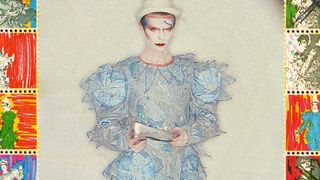
If you've read our feature on how to listen to David Bowie in chronological order, you'll know that this is Bowie's second UK number one.
While the song's style has often been classified as art rock or new wave, Bowie himself called it "very much a 1980s nursery rhyme" soon after recording it.
Your speakers' task here involves delicate guitar synth strings, a hard-edged funk bass line and some complex vocal layering. With so many voices, it's almost choir-like in places, underpinned by Bowie's somehow dead-pan yet still attacking, lead vocal. In places, it's an introspective, sad take on Bowie's Major Tom character, but it also features lyrics generated from his oft-used cut-up technique. It really shouldn't work, but it does.
Consider yourself a Bowie expert now? Put it to the test with our Rise and Fall of Ziggy Stardust lyrics quiz.
Pulp – Common People (1995)
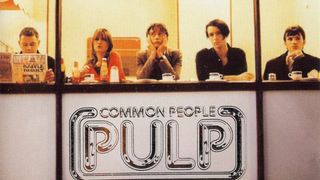
It's hard to imagine Jarvis Cocker concocting this tune on a dinky Casiotone MT-500 keyboard he'd bought from the Music & Video Exchange shop in Notting Hill. The final version used all of the 48 tracks The Town House studio in London could afford the band, thus elevating it to the snarling, acid-tongued, definitive anthem of Britpop we know today.
Pulp first performed the song at Reading Festival in 1994. Cocker later admitted he had trouble remembering the lyrics on stage, since he'd written most of them the night before. A year later, they performed it at Glastonbury as the headline act.
Recording the thing was a different story, however. That was a two week affair with veteran producer Chris Thomas twisting the knobs at the desk. Make sure you listen to the full "Like a dog lying in a corner" album version, so you can run your speakers through the peak of the crescendo where Cocker reduces to an intense whisper. See if you can still hear the stylophone – it is there, over on the right.
Toto – Africa (1982)
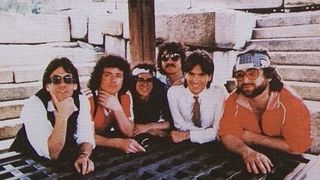
It's not often a pop song deploys a conga drum, a three-note gamelan and six tracks of a Yamaha GS-1 synth to emulate the sound of a kalimba. Musically, this song took time to record, owing to synth player Steve Porcaro's brother, Jeff, who played his drum parts live without a click track.
Jeff set up his bass drum, snare and a hi-hat, and Lenny Castro set up right in front, with the conga. Apparently, after about five minutes of playing and trying to find the groove (singing the bass line in their heads), they went to the booth to hear what they'd done. After about half an hour of listening, they marked out the best two bars on the tape. Would've been simpler to just programme it on a Linn, no? According to Jeff, "a Linn machine doesn't feel like that".
Get ready to soar through the expansive plains of Africa – if your speakers can pass this timing test across the frequencies, that is.
Gotye – Somebody That I Used to Know (2011)
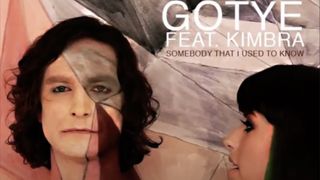
The fact that Gotye self-produced this track, in his parents' barn in Victoria, Australia, is testament to the Belgian-Australian singer-songwriter's surgical skill when it comes to mixing.
Gotye began with a sample of Brazilian jazz guitarist Luiz Bonfá's 1967 instrumental, Seville, then added chord progressions, a Latin loop, some percussion, the flute sounds – and who could forget the inclusion of children's nursery-rhyme Baa Baa Black Sheep on xylophone?
Gotye has said that the balance of sounds taken from records versus samples he created himself was perhaps 50–50 on the track, and through the right speakers, the artist's sonic manipulation smarts shine.
Madonna – Like a Virgin (1984)
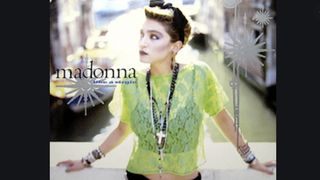
Doubtless the song that crowned Madonna the Queen of Pop, it's those textured, high registers we're focusing on here. There's some juicy synths along the bass line and an energetic drum arrangement, but rarely is a pop belt heard at these frequencies, for this long – such is Madonna's vocal range.
If your speakers can deliver her stylings without coming off harsh or brash, they've made it through the wilderness. (Somehow they made it through...)
Peter Gabriel – Sledgehammer (1986)
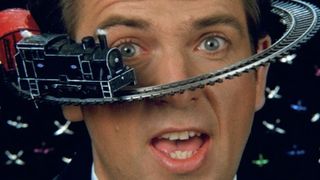
This is also mentioned in our 30 best music videos of all time feature, but the track alone is emphatically worthy of a nod. If dance-rock and Memphis soul had a beautiful relationship and started a family, Sledgehammer would be among its children.
The horn section here was provided by Memphis label, Stax, led by Wayne Jackson of the Memphis Horns, Stax's house musicians – and it's a pure slice of 1960s soul. Add Gabriel's lyrics, a synthesised shakuhachi (a Japanese end-blown bamboo flute), backing vocals from noted singers P. P. Arnold, Coral 'Chyna Whyne' Gordon and Dee Lewis, plus a stonking production from Daniel Lanois and Gabriel himself, and you've got yourself the test of dynamics and low-end reach that your speakers have been waiting for.
Eurythmics – Sweet Dreams (Are Made of This) (1982)
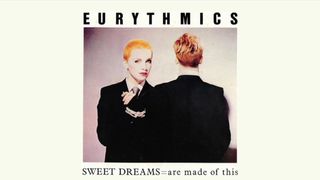
Considering the duo's stratospheric global success, it's easy to forget that this – their breakthrough song – was made on a shoe-string, mostly in a tiny room above a picture-framing shop in Chalk Farm.
The track is known for its duelling synths style, which genuinely was the case; Dave Stewart on one, Annie Lennox on the other. The rest of the band's production gear was purchased second hand, after they managed to secure a bank loan of £5000. Nearly half of that cash went on a Movement Systems Drum Computer, meaning they both had to sleep over at the manufacturer's house while their prototype (only about 30 were ever made) was finished.
Lennox borrowed and played an Oberheim synthesiser to add some strings to the song, and their only microphone (a pretty basic affair, normally used for recording just the hi-hat) was used to capture everything – including Lennox's vocal – to a Tascam 8-track tape recorder.
Of course, your hi-fi system will relay each and every unique sonic nuance thrown up by the band's circumstances here, provided those drivers are transparent enough...
MORE:
11 of the best musical soundtracks to test your speakers
12 of the best Spotify playlists to listen to right now
9 brilliant albums recorded in self-isolation
25 of the best tracks for testing bass
Becky has been a full-time staff writer at What Hi-Fi? since March 2019. Prior to gaining her MA in Journalism in 2018, she freelanced as an arts critic alongside a 20-year career as a professional dancer and aerialist – any love of dance is of course tethered to a love of music. Becky has previously contributed to Stuff, FourFourTwo, This is Cabaret and The Stage. When not writing, she dances, spins in the air, drinks coffee, watches football or surfs in Cornwall with her other half – a football writer whose talent knows no bounds.
